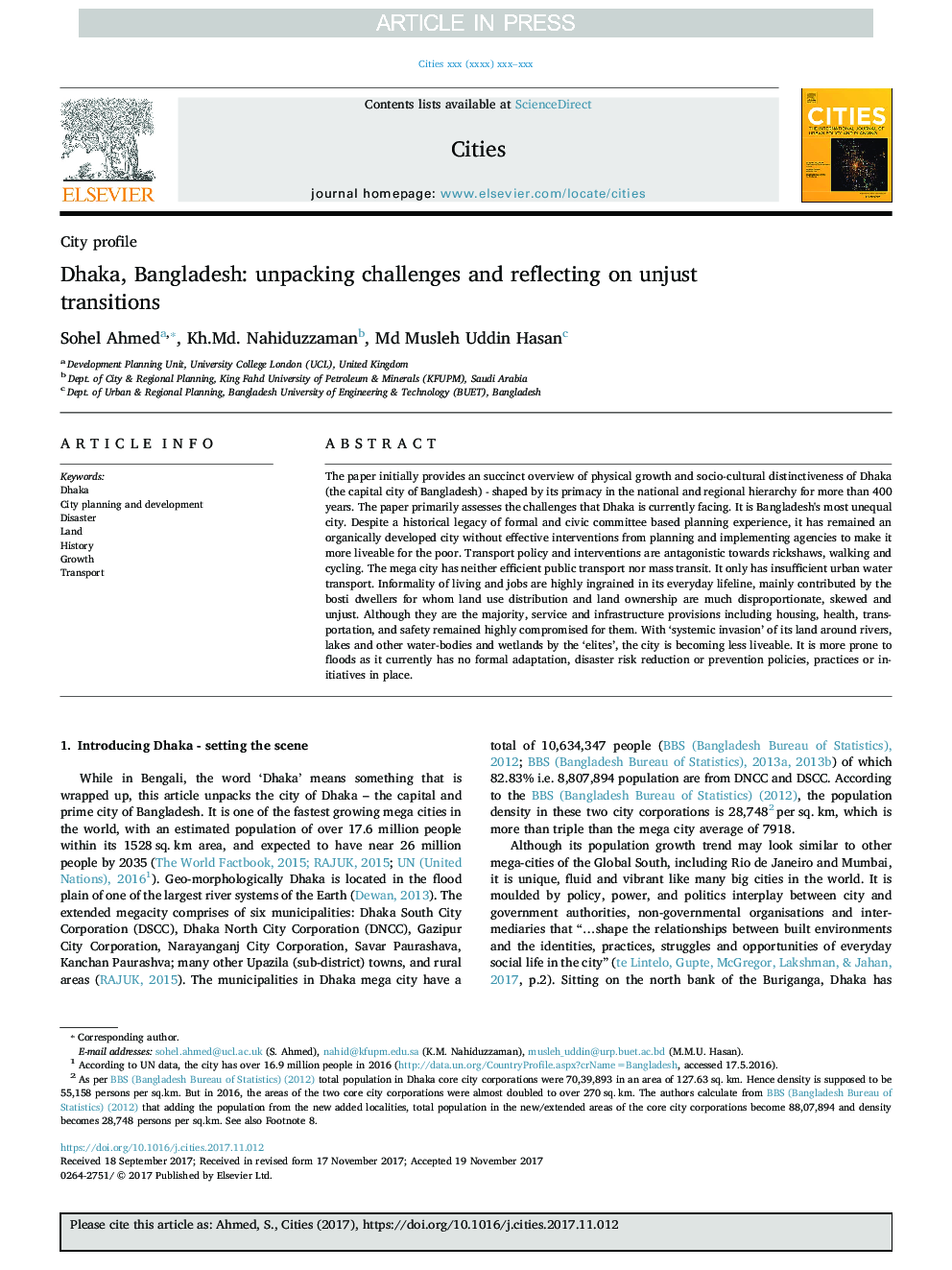| Article ID | Journal | Published Year | Pages | File Type |
|---|---|---|---|---|
| 7417380 | Cities | 2018 | 16 Pages |
Abstract
The paper initially provides a succinct overview of physical growth and socio-cultural distinctiveness of Dhaka (the capital city of Bangladesh) - shaped by its primacy in the national and regional hierarchy for more than 400 years. The paper primarily assesses the challenges that Dhaka is currently facing. It is Bangladesh's most unequal city. Despite a historical legacy of formal and civic committee based planning experience, it has remained an organically developed city without effective interventions from planning and implementing agencies to make it more liveable for the poor. Transport policy and interventions are antagonistic towards rickshaws, walking and cycling. The mega city has neither efficient public transport nor mass transit. It only has insufficient urban water transport. Informality of living and jobs are highly ingrained in its everyday lifeline, mainly contributed by the bosti dwellers for whom land use distribution and land ownership are much disproportionate, skewed and unjust. Although they are the majority, service and infrastructure provisions including housing, health, transportation, and safety remained highly compromised for them. With 'systemic invasion' of its land around rivers, lakes and other water-bodies and wetlands by the 'elites', the city is becoming less liveable. It is more prone to floods as it currently has no formal adaptation, disaster risk reduction or prevention policies, practices or initiatives in place.
Related Topics
Social Sciences and Humanities
Business, Management and Accounting
Tourism, Leisure and Hospitality Management
Authors
Sohel Ahmed, Kh Md Nahiduzzaman, Md Musleh Uddin Hasan,
